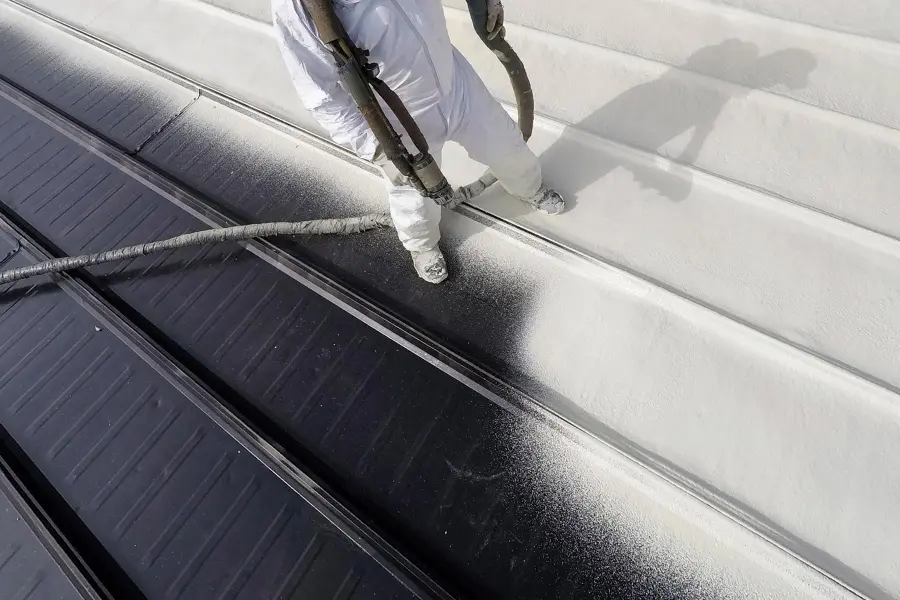Why Pole Barn Owners Are Switching to Spray Foam Insulation
Pole barns, also known as post-frame buildings, are increasingly popular for agricultural, storage, and even residential use. Traditionally, these structures have been insulated with fiberglass batt, cellulose, or other conventional materials. However, more pole barn owners are making the switch to spray foam insulation due to its many benefits. Spray foam insulation provides superior energy efficiency, moisture control, and long-term durability, addressing common issues faced in pole barns.
In this article, we will explore why spray foam is gaining traction among pole barn owners, including its advantages over other insulation options, key factors to consider before installation, and how it contributes to a more comfortable, energy-efficient environment.
Advantages of Spray Foam for Pole Barns
Spray foam insulation offers numerous benefits for pole barns, particularly in terms of energy efficiency, moisture resistance, and durability. Unlike traditional insulation materials, spray foam expands upon application, filling every gap and crack. This creates an airtight seal that not only prevents heat from escaping but also stops moisture from infiltrating the building. Here are the primary advantages of using spray foam insulation in pole barns:
1. Energy Efficiency
One of the key reasons pole barn owners are switching to spray foam insulation is its ability to significantly improve energy efficiency. Spray foam has a higher R-value per inch than other insulation materials, which means it provides superior thermal resistance. This leads to better temperature regulation inside the pole barn, keeping it warmer in winter and cooler in summer.
- Winter: Spray foam prevents heat loss, reducing the reliance on heating systems.
- Summer: It acts as a barrier to outside heat, allowing the cooling system to run more efficiently.
2. Moisture Control
Pole barns are often susceptible to moisture-related issues, especially in humid climates. Spray foam insulation provides a barrier that prevents water vapor from entering the building. This is crucial in areas like basements, crawl spaces, and any sections prone to humidity. Closed-cell spray foam, in particular, is highly effective at repelling moisture, helping to prevent mold and mildew growth, which can cause structural damage.
3. Long-Term Durability
Spray foam insulation is durable and long-lasting. Unlike traditional insulation materials, which can settle, sag, or degrade over time, spray foam maintains its effectiveness for the lifetime of the building. This makes it a great investment for pole barn owners looking to insulate their structures for the long haul.
4. Air Barrier and Soundproofing
In addition to thermal insulation, spray foam also acts as an air barrier, blocking air infiltration and reducing drafts. This contributes to a more consistent indoor temperature. Furthermore, open-cell spray foam can provide some degree of soundproofing, which is helpful in noisy environments, such as workshops or barns with livestock.
Types of Spray Foam Insulation for Pole Barns
When considering spray foam insulation for a pole barn, it’s important to understand the two main types available: open-cell and closed-cell foam. Both have their own advantages, and the choice between the two depends on the specific needs of the building.
| Feature | Open-Cell Foam | Closed-Cell Foam |
|---|---|---|
| Density | Lower density, softer | Higher density, rigid |
| R-Value | 3.5 to 4 per inch | 6 to 7 per inch |
| Air Barrier | Good air barrier, but not complete | Complete air and moisture barrier |
| Water Resistance | Absorbs water, can trap moisture | Water-resistant, prevents moisture buildup |
| Cost | More affordable | More expensive |
| Best For | Interior applications like ceilings and walls | Exterior walls, foundations, areas with moisture |
| Soundproofing | Good at sound absorption | Less effective for soundproofing |
When to Use Open-Cell Foam
Open-cell foam is ideal for pole barns located in areas with moderate climates or where moisture is not a major concern. It’s a more affordable option and works well for insulating interior walls and ceilings. However, it’s less effective in areas where water resistance is a priority.
When to Use Closed-Cell Foam
Closed-cell foam is best for pole barns in areas with higher moisture or extreme weather conditions. Its higher R-value makes it particularly effective in extreme climates, both hot and cold. It also provides excellent water resistance, making it suitable for exterior walls, foundations, and any other areas exposed to moisture.
Things to Consider Before Making a Decision
Before choosing spray foam insulation for your pole barn, there are several factors to consider to ensure that it’s the best fit for your specific needs.
1. Climate and Location
The climate of your region plays a major role in determining which type of spray foam to use. In cold climates, closed-cell foam is often the better choice due to its higher R-value and moisture resistance. For warmer or milder climates, open-cell foam may be sufficient, providing effective insulation while being more affordable.
2. Building Purpose
The intended use of your pole barn can impact the type of insulation you choose. For example, a pole barn used for agricultural purposes may require moisture-resistant closed-cell foam to protect against humidity. On the other hand, a pole barn used for storage might not need the same level of moisture protection and could benefit from the cost-effectiveness of open-cell foam.
3. Installation Process
Spray foam insulation requires professional installation. The foam needs to be sprayed by a trained technician to ensure proper application and expansion. It is critical to hire a qualified contractor who has experience installing spray foam in pole barns. Poor installation can result in uneven coverage, reducing the overall effectiveness of the insulation.
4. Long-Term Costs
Although spray foam insulation can be more expensive than traditional insulation materials upfront, it often results in long-term savings due to its superior energy efficiency. The reduction in heating and cooling costs can offset the initial investment over time. Consider the long-term energy savings before making a decision based solely on upfront costs.
Bonus Tips:
- Maximize Coverage: Ensure that all gaps, cracks, and hard-to-reach areas are properly insulated to prevent air leaks.
- Check for Rebates: Some states or utility companies offer rebates or incentives for energy-efficient upgrades, including spray foam insulation. Check with your local authorities to see if any programs are available.
Common Questions About Spray Foam Insulation for Pole Barns
1. Is spray foam insulation worth the investment for pole barns?
Yes, spray foam insulation can be a worthwhile investment due to its superior energy efficiency, moisture control, and long-term durability. While the upfront cost may be higher, the energy savings and protection against moisture issues make it a smart choice for many pole barn owners.
2. Can I install spray foam insulation in an existing pole barn?
Yes, spray foam insulation can be applied to both new and existing pole barns. Professional installers can spray foam onto the interior walls, ceilings, and other areas of an existing structure to improve its insulation.
3. How long does spray foam insulation last in a pole barn?
Spray foam insulation is designed to last for the lifetime of the building. Unlike traditional insulation materials, it does not sag or settle over time. As long as it’s applied correctly, it will provide consistent performance for many years.
4. Does spray foam insulation help with soundproofing in a pole barn?
Yes, open-cell spray foam provides some soundproofing properties by absorbing sound. This can be especially useful in pole barns used for workshops or other environments where noise reduction is important.
5. Can spray foam insulation prevent mold growth in a pole barn?
Yes, closed-cell spray foam acts as a moisture barrier, preventing water from entering the building and reducing the likelihood of mold growth. Open-cell foam does not provide the same level of moisture resistance but can still help control humidity.
Make the Right Decision
Choosing the right insulation for your pole barn is essential for improving its energy efficiency, moisture resistance, and overall comfort. Spray foam insulation offers significant advantages over traditional insulation materials, particularly in terms of durability and performance. By considering factors such as climate, building purpose, and budget, you can determine whether spray foam insulation is the right choice for your pole barn. Whether you choose open-cell or closed-cell foam, spray foam is a smart investment that will help maintain a stable and comfortable environment year-round.










